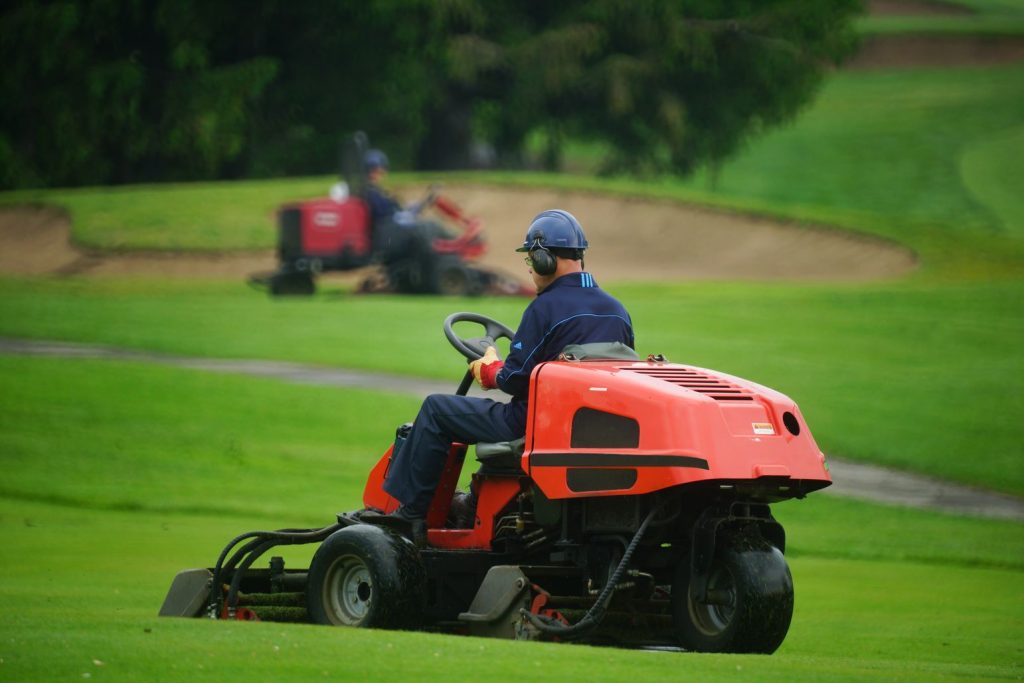
How fall fatigue can be hazardous to outdoor workers
By The Canadian Centre for Occupational Health and Safety (CCOHS)
While it can be difficult to isolate the effect of fatigue on incident and injury rate, understanding it as a workplace hazard and implementing controls can help employers prevent fatigue-related incidents.

Sleep deprivation when operating heavy equipment can be dangerous. (Mario Beauregard/Adobe Stock)
This commentary was originally published by Turf & Rec, a sister publication of OHS Canada.
Cold, dark mornings, fleeting afternoons, and early sunsets are signs of autumn.
And as days get shorter and cooler, workers in every setting often report symptoms of fatigue, such as feeling a little foggy, being mentally or physically tired at work, and struggling with motivation.
For outdoor workers, these symptoms can be even more obvious – and potentially more dangerous. To keep workers safe, employers need to proactively address the risks of worker fatigue.
Workers may think that feeling tired, run down, or sleepy are simply signs of the season, but any number of work-related factors may be causing the fatigue they are experiencing.
Fatigue is a workplace hazard that employers in turf and grounds maintenance should be proactively addressing year-round.
The impacts of fatigue can be considered a form of impairment, making it a workplace hazard that can be dangerous for not only the worker, but other employees and even members of the public.
In landscaping, for example, if preventative measures aren’t put in place, long hours of physical exertion or extended workdays may result in incidents while operating loaders or heavy equipment.
A fatigued worker may also be susceptible to collisions while driving other crew members to and from the worksite.
While it can be difficult to isolate the effect of fatigue on incident and injury rate, understanding it as a workplace hazard and implementing controls can help employers prevent fatigue-related incidents.
Helping outdoor workers fight fatigue
Fatigue can be addressed through your safety management system, or as a separate fatigue management program that includes a number of actions.
Train supervisors and workers to assess the risks by taking a thorough look at each project or job site and identify equipment, situations, and processes that have an increased risk of causing harm due to fatigue. Once fatigue hazards have been identified, they can evaluate the risk level and decide how to eliminate or control the harm.
On darker days, workers may need artificial light sources and reflective gear to see properly and be seen and to work safely. They may become more fatigued when they are doing repetitive, time-consuming or laborious tasks, so it’s important to change things up and offer variety in their work throughout the workday.
Are your crew members working in shifts? Where you can, optimize the design of the shift schedule by establishing the length of the rotation period and direction of the shift rotation. For example, it’s best to create a schedule for shift workers that rotates forward.
Going from a day shift to afternoon/evening shift, and then into night shift, is easier on the body and helps build a routine.
If you can, make adjustments. The most demanding and high-risk tasks should be avoided towards the end of shift, or between certain hours (i.e., between the hours of midnight and 6 a.m.) when employees may be less alert.
Most people require at least seven to nine hours of sleep each night. Educate workers on the importance of getting a good sleep and encourage them to stay home if they’re suffering from sleep deprivation.
What helps one person sleep may not work for another, but general tips include going to bed and getting up at the same time every day, limiting screen time before sleep, and exercising regularly. They should use their bed primarily to sleep and not check their phone or watch television immediately before going to sleep.
Train everyone on the hazards of fatigue, including how to recognize symptoms such as tiredness, weariness, sleepiness, irritability, mental or physical exhaustion, and reduced alertness, concentration, and memory.
Workers should also know how to recognize less obvious symptoms such as reduced productivity, lack of motivation, depression, headaches, and increased susceptibility to illness. Remind them regularly not to hit snooze on feelings like giddiness, boredom, loss of appetite, and digestive issues. These may also be signs of fatigue.
Encourage workers to speak up if they’re experiencing any symptoms of fatigue that may affect their ability to do their jobs safely. You can support them by providing access to mental health services such as employee assistance programs, and healthy lifestyle supports like fitness stipends or paramedical benefits (such as registered massage therapists or physiotherapists).
By following these tips and addressing potential fatigue hazards and their associated risks, employers can feel confident they’re preparing their work crews for safe and productive workdays, no matter the season.
The Canadian Centre for Occupational Health and Safety (CCOHS) promotes the total well-being — physical, psychosocial, and mental health — of workers in Canada by providing information, advice, education, and management systems and solutions that support the prevention of injury and illness.